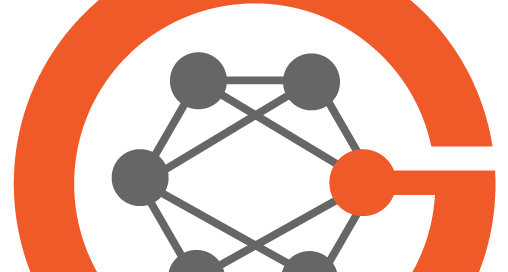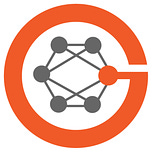Transcript with audio and relevant external links, recorded on 6 Feb 2024
Eric Topol (00:05):
Hello, this is Eric Topol with Ground Truths, and I have a remarkable guest with me today, Professor Michelle Monje, who is from Stanford, a physician-scientist there and is really a leader in neuro-oncology, the big field of cancer neuroscience, neuroinflammation, and she has just been rocking it recently with major papers on these fields, no less her work that's been on a particular cancer, brain cancer in kids that we'll talk about. I just want to give you a bit of background about Michelle. She is a National Academy of Medicine member, no less actually a National Academy of Medicine awardee with the French Academy for the Richard Lounsbery Award, which is incredibly prestigious. She received a Genius grant from the MacArthur Foundation and is a Howard Hughes Medical Institute (HHMI) scholar, so she is just an amazing person who I'm meeting for the first time. Michelle, welcome.
Michelle Monje (01:16):
Thank you. So nice to join you.
Long Covid and the Brain
Eric Topol (01:18):
Well, I just am blown away by the work that you and your colleagues have been doing and it transcends many different areas that are of utmost importance. Maybe we can start with Long Covid because that's obviously such a big area. Not only have you done work on that, but you published an amazing review with Akiko Iwasaki, a friend of mine, that really went through all the features of Long Covid. Can you summarize your thoughts about that?
Michelle Monje (01:49):
Yeah, and specifically we focused on the neurobiology of Long Covid focusing on the really common syndrome of cognitive impairment so-called brain fog after Covid even after relatively mild Covid. There has been this, I think really important and exciting, really explosion of work in the last few years internationally trying to understand this in ways that I am hopeful will be beneficial to many other diseases of cognition that occur in the context of other kinds of infections and other kinds of immune challenges. But what is emerging from our work and from others is that inflammation, even if it doesn't directly initially involve the nervous system, can very profoundly affect the nervous system and the mechanisms by which that can happen are diverse. One common mechanism appears to be immune challenge induced reactivity of an innate immune cell in the nervous system called microglia. These microglia, they populate the nervous system very early in embryonic development.
(02:58):
And their job is to protect the nervous system from infection, but also to respond to other kinds of toxic and infectious and immune challenges. They also play in healthy conditions, really important roles in neurodevelopment and in neuroplasticity and so they're multifaceted cells and this is some population of those cells, particularly in the white matter in the axon tracks that are exquisitely sensitive it seems to various kinds of immune challenges. So even if there's not a direct nervous system insult, they can react and when they react, they stop doing their normal helpful jobs and can dysregulate really important interactions between other kinds of cells in the brain like neurons and support cells for those neurons like oligodendrocytes and astrocytes. One common emerging principle is that microglial reactivity triggered by even relatively mild Covid occurring in the respiratory system, not directly infecting the brain or other kinds of immune challenges can trigger this reactivity of microglia and consequently dysregulate the normal interactions between cells and the brain.
(04:13):
So important for well-tuned and optimal nervous system function. The end product of that is dysfunction and cognition and kind of a brain fog impairment, attention, memory, ability to multitask, impaired speed of information processing, but there are other ways that Covid can influence the nervous system. Of course there can be direct infection. We don't think that that happens in every case. It may not happen even commonly, but it certainly can happen. There is a clear dysregulation of the vasculature, the immune response, and the reaction to the spike protein of Covid in particular can have very important effects on the vessels in the nervous system and that can trigger a cascade of effects that can cause nervous system dysregulation and may feed directly into that reactivity of the microglia. There also can be reactivation of other infections previous, for example, herpes virus infections. EBV for example, can be reactivated and trigger a new immune challenge in the context of the immune dysregulation that Covid can induce.
(05:21):
There also can be autoimmunity. There are many, we're learning all the different ways Covid can affect the nervous system, but autoimmunity, there can be mimicry of some of the antigens that Covid presents and unfortunate autoimmunity against nervous system targets. Then finally in severe Covid where there is cardiopulmonary compromise, where there is hypoxia and multi-organ damage, there can be multifaceted effects on the nervous system in severe disease. So many different ways, and probably that is not a comprehensive list. It is certainly not a mutually exclusive list. Many of these interactions can happen at the same time in the same individual and in different combinations but we're beginning to wrap our arms around all the different ways that Covid can influence the nervous system and cause this fairly consistent syndrome of impaired attention, memory, multitasking, and executive functions.
Homology with Chemo Brain
Eric Topol (06:23):
Yeah, well there's a lot there that you just summarized and particularly you highlighted the type of glia, the microglia that appear to be potentially central at least a part of the story. You also made analogy to what you've seen with chemotherapy, chemo brain. Maybe you could elaborate on that.
Michelle Monje (06:42):
Yeah, absolutely. So I've been studying the cognitive impairment that can happen after cancer therapies including chemotherapy, but also radiation and immunotherapy. Each time we develop a new model and dig in to understand what's going on and how these cancer therapies influence the nervous system, microglia emerge as sort of the unifying principle, microglial reactivity, and the consequences of that reactivity on other cell types within the nervous system. And so, understanding that microglia and their reactive state to toxic or immune challenges was central to chemotherapy induced cognitive impairment, at least in preclinical models in the laboratory and confirm by human tissue studies. I worried at the very beginning of the pandemic that we might begin to see something that looks a lot like chemotherapy induced cognitive impairment, this syndrome that is characterized by impaired attention, memory, executive function, speed of information processing and multitasking. When just a few months into the pandemic, people began to flood neurologists’ office complaining of exactly this syndrome. I felt that we needed to study it and so that was the beginning of what has become a really wonderful collaboration with Akiko Iwasaki. I reached out to her, kind of cold called her in the midst of the deep Covid shutdown and in 2020 and said, hey, I have this idea, would you like to work with me? She's as you know, just a thought leader in Covid biology and she's been an incredibly wonderful and valuable collaborator along the way in this.
Eric Topol (08:19):
Well, the two of you pairing up is kind of, wow, that's a powerful combination, no question. Now, I guess the other thing I wanted to get at is there've been many other studies that have been looking at Long Covid, how it affects the brain. The one that's frequently cited of course is the UK Biobank where they had CT or MRI scans before in people fortunately, and then once they had Covid or didn't get Covid and it had a lot of worrisome findings including atrophy and then there are others that in terms of this niche of where immune cells can be in the meninges, in the bone marrow or the skull of the brain. Could you comment on both those issues because they've been kind of coming back to haunt us in terms of the more serious potential effects of Covid on the brain?
Michelle Monje (09:20):
Yeah, absolutely and I will say that I think all of the studies are actually quite parsimonious. They all really kind of point towards the same biology, examining it at different levels. And so that UK Biobank study was so powerful because in what other context would someone have MRI scans across the population and cognitive testing prior to the Covid pandemic and then have paired same individual tests after a range of severity of Covid infection so it was just an incredibly important data set with control individuals in the same cohort of people. This longitudinal study has continued to inform us in such important ways and that study found that there were multiple findings. One is that there appears to be a small but significant atrophy in the neocortex. Two that there are also abnormalities in major white matter tracts, and three, that there is particular pathology within the olfactory system.
(10:30):
And we know that Covid induces as a very common early symptom, this loss of smell. Then together with those structural findings on MRI scans that individuals even with relatively mild acute disease, exhibited long-term deficits in cognitive function. That fits with some beautiful epidemiological studies that have been done across many thousands of individuals in multiple different geographic populations. Underscoring this consistent finding that Covid can induce lasting cognitive changes and as we begin to understand that biology, it fits with those structural changes that are observed. We do know that the olfactory system is particularly affected and so it makes sense that the olfactory system, which show those structural changes, the neocortical and white matter changes evident on MRI fit with what we found microscopically at the cellular and molecular level that highlighted a loss of myelinating oligodendrocytes, a loss of myelinated axons, a deficit in hippocampal new neuron production. All of those findings fit together with the structural changes that the UK Biobank study highlighted. So clearly this is a disease that has lasting impacts, and the challenge is to understand those better so that we can develop effective interventions for the many, many millions of people who are still struggling with decreases in their cognitive function long after Covid exposure affecting the world population.
The Brain’s Immune System
Eric Topol (12:17):
Yeah, that's a great summary of how the Biobank data UK aligned with the work that you've done and I guess the other question just to round this out is for years we didn't think the brain had an immune response system, right? Then there's been a wakeup call about that, and maybe you could summarize what we know there.
Michelle Monje (12:41):
Absolutely. Yes, the brain is not, we used to call the nervous system an immuno privilege site, and it is not hidden from the immune system. It has its own and distinct immune system properties, but it's very clear from work by Jony Kipnis and others that there are in fact lymphatics in the nervous system. These are in the meninges. It's also become increasingly clear that there is a unique bone marrow niche in the skull from which many of the lymphocytes and other kinds of immune cells that survey and surveil the brain and spinal cord, that's where they come from. That's where they develop and that's where they return and the lymphatic drainage of the nervous system goes to distinct places like the posterior cervical lymph nodes. We are now understanding the sort of trafficking in and out of the nervous system of cells, and certainly understanding how that changes in the context of Covid, how those cells may be particularly responsive to the immune challenge initiated in the respiratory system is something that is an area of deep importance and active exploration. In fact, some of my ongoing collaborations and ongoing lab work focuses on exactly this question, how does the trafficking from the brain borders into the nervous system change after Covid? And how does potentially cellular surveillance of immune cells contribute of the nervous system contribute to the persistent microglial reactivity that we observe?
Eric Topol (14:22):
And do you have any hunch on what might be a successful worthwhile therapy to a candidate to test prospectively for this?
Michelle Monje (14:30):
I think it's too early to nominate candidates, but I think that the biology, the molecular and cellular biology is underscoring a role for particular cytokines and chemokines that are initiated by the immune response in the lung. And clear cellular targets, the goal I think the central goal being to normalize the neurovasculature and normalize microglial reactivity and so the question in this disease context and in others becomes, how can we kind of molecularly coach these reactive cells to go back to doing their normal jobs to being homeostatic? That's the challenge, but it's a surmountable challenge. It's one that I think that the scientific community can figure out, and it will be relevant not only to Covid, but also to many other consequences of immune challenges, including other post-infectious syndromes. It's not only Covid that causes long-term cognitive and other kinds of neurological and neuropsychiatric consequences. We saw this after the influenza pandemic in 1918. We've seen it after many other kinds of infectious challenges and it's important as we prepare for the next pandemic for the next global health challenge that we understand how the long-term consequences of an immune response to a particular pathogen play out.
Eric Topol (15:58):
No question and that I guess also would include myalgic encephalomyelitis and all the other post-infectious post viral syndromes that overlap with this. Now to switch gears, because that work is just by itself extraordinary but now there's this other field that you are a principal driver, leader, and that is cancer neuroscience. I didn't even know they had boards in neuro-oncology. I thought neurology was enough, but you got board certified in that too. This field is just exploding of interest because of the ability for cancer to cells to hijack neurons and neural circuits, which I guess the initial work goes way back but more recently, the fact that gliomas were just electrically charged. And so maybe you can frame this because this has not just amazing biology, but it's also introducing all sorts of therapeutic opportunities, including many ongoing trials.
The Neuroscience of Cancer
Michelle Monje (17:08):
Yes, yes and thank you for asking me about it. It's certainly one of my favorite things to think about, and perhaps as a bridge between the cognitive impairment that occurs after Covid and other inflammatory challenges and the neuroscience of cancer. I'll just highlight that maybe the common theme is it's important to understand the way cells talk to each other and that these sort of molecular conversations are happening on multiple scales and in unexpected ways, and they shape pathophysiology in a very important way. So continuing on that theme, we've known for many, many years, for decades in fact, that the nervous system and its activity shapes the development of the nervous system and actually it doesn't just shape the development of the nervous system where perhaps it's intuitive that the activity within the nervous system might sculpt the way that it forms, but it turns out that innervation is critical for development broadly, that innervation is necessary for organogenesis and that this is becoming clear in every organ that's been studied.
(18:15):
And so it stands to reason given that kind of perspective on the role that neuronal activity plays in normal development, plasticity, homeostasis, and regeneration of many different tissues, that the activity of the nervous system and those principles can be hijacked in the context of cancer, which is in many ways a disease of dysregulated development and regeneration. And so, I'm a neuro oncologist, I take care of children with a very terrible form of brain cancer called high-grade glioma and the most common form of high-grade glioma in kids occurs in the brain stem, it's called diffuse intrinsic pontine glioma (DIPG). It's really the worst disease you can imagine and understanding it has been the need to understand and treat it has been a guiding principle for me. And so, taking a big step back and trying to wrap my arms around the biology of these terrible high-grade gliomas like glioblastoma, like diffuse intrinsic pontine glioma, I wondered whether nervous system activity might influence cancer the way that it influences normal development and plasticity.
(19:23):
And as soon as we started to leverage tools of modern neuroscience like optogenetics to ask those questions to modulate the activity of neurons in a particular circuit and see how that influences cancer proliferation and growth, it was clear how very important this was, that active neurons and various subtypes very robustly drives the growth of these brain cancers. And so trying to understand the mechanisms by which that occurs so that we can target them therapeutically, it's become clear that the tumors don't just respond to activity regulated growth signals. They do. There are those paracrine factors, but that in brain cancer, the cancers actually integrate into the neural circuits themselves. That there are bonafide electrophysiological functional synapses that form between various types of neurons and high-grade glioma cells. We're discovering the same can occur in brain metastases from different organs, and that this principle by which neuronal activity drives the cancer is playing out in other tissues.
(20:32):
So right when we made these discoveries about glioma within this few years, discoveries were made in prostate cancer, in gastric cancer, colon cancer, skin cancer, pancreatic cancer. It seems that innervation is critically important for those tumor, and not just for their growth, but also for invasion metastasis, even initiation in diseases that are driven by particular oncogenes. There's an intersection between the power of those oncogenes to cause the cancer and the necessary environment for the cancer to form and that appears to also be regulated by the nervous system in very powerful ways. So, the exciting thing about recognizing this relatively unsettling feature of cancers is that as we understand it, the neuroscience of cancer becomes an entirely new pillar for therapy to combine with immunotherapy and more traditional cytotoxic therapies and we've been missing it until now. And so the opportunity exists now to leverage medicines that were developed for other reasons, for indications in neurology and cardiology and psychiatry medicines that target neurotransmitter receptors and ion channels that it turns out have a role in some forms of cancer. Now, each cancer has its own biology, so different types of neurons, different neurotransmitters, different neuropeptides play specific roles in that tissue context, but the principle is the same and so as we understand each cancer, we can start to understand what neuroscience inspired medicines we might leverage to better treat these tumors.
Rewriting the Hallmarks of Cancer
Eric Topol (22:17):
Yeah, I mean it's amazing as a cardiologist to think that beta blockers could be used to help people with cancer and of course there are trials and some studies and particular cancers in that. One of the things that people maybe not outside of oncology don't follow these papers about hallmarks of cancer. There's been two editions, major editions of the hallmarks of cancer, and recently in the journal of cancer Cell, Douglas Hanahan and you wrote a classic about that the hallmarks need to be revised to include neuroscience. Maybe you could elaborate on that because it seems like this is a missing frontier that isn't acknowledged by some of the traditional views of cancer.
Michelle Monje (23:08):
Absolutely. So I think number one, I want to just give a shout out to Doug Hanahan and the role that the hallmarks of cancer, which is a review article that he wrote and has become sort of the Bible, if you will, of cancer biology really laying out common principles across cancer types that have provided a framework for us to understand this complex and diverse heterogeneous set of diseases. And so it was very exciting when he reached out and asked if I wanted to write this perspective, culminating nervous system interactions, neuroscience interactions as an emerging hallmark of cancer and as we examine them from that, we examine the neuroscience of cancer from that heuristic set of principles, this framework of principles of cancer biology, it's clear that there is a neural influence on the vast majority of them. We now understand from this exciting and burgeoning field that the nervous system can regulate cancer unregulated proliferation.
(24:17):
It promotes proliferation and growth. It promotes invasion and metastasis. It alters the immune microenvironment. It can both promote pro-tumour inflammation through neurotransmitter signaling. It can also help to modulate anti-tumor immunity. The crosstalk between immune cells, cancer cells and the nervous system are complex, profound, and I would argue incredibly important for immunotherapeutic approaches for cancer. At the same time that there are these diverse effects of the nervous system on cancer, cancer also influences the nervous system. And so, there's really this bidirectional crosstalk happening by which neurons in an activity dependent way, either in short range local neurons or in long range down a nerve or across a circuit, promote the pathophysiology of the cancer and you kind of know it's beneficial because the cancer does many different active things to increase innervation of the tumor. There is in a variety of different tissue context and disease states, elaboration of nervous system interactions through cancer derived either axonogenic or synaptogenic factors secretion, the nervous system remodels the nerves. It remodels the neural circuits to increase the connectivity of the nervous system with the cancer, and also to increase the activity of the nerves to increase the excitability of a neuron. And this contributes to not only driving the cancer, but to many of the really important symptoms that patients face with cancer, including tumor associated seizures as well as cancer associated pain.
Eric Topol (26:07):
Yeah, I mean this is actually so unusual to see a whole another look at what cancer is about. I mean, this is about as big a revision of thinking as I've seen at least in many, many years. The fact that you pulled this together about the new hallmarks also made me wonder because a number of years ago we went through this angiogenesis story whereby like this cancer can hijack blood vessels and promote it to growth. As you know very well, a lot of these anti-angiogenic efforts didn't go that well. That is they maybe had a small impact overall, but they didn't change the field in terms of success of therapy. I wonder if this is going to play out very differently. What are your thoughts about that? There's lots of shots on goal here and the trials have sprouted out very quickly to go after this.
Michelle Monje (27:12):
Yeah. I think it's important to recognize various microenvironmental effects on a cancer, including the nervous system effects as one piece of a puzzle that we need to put together in order to effectively treat the disease and I think to effectively treat a particularly very aggressive cancers, we need to hit this from multiple angles. Effective strategies will need to include targeting cell intrinsic vulnerabilities of the cancers as most traditional and targeted therapies are focused on doing right now together with decreasing the strong growth and metastasis influencing effects of the nervous system. I think that's one pillar of therapy that we really have been missing and that represents an important opportunity as well as leveraging the power of the immune system, which perhaps will only work optimally, particularly for solid tumors if you also address the nervous system influences on immune cells. And so I think that it's part of a holistic approach to effective therapy for tumors.
(28:21):
We have so far failed to treat with single agent or one dimensional kinds of approaches. We need to target not only the cell intrinsic vulnerabilities, the immunotherapeutic opportunities, and the nervous system mechanisms that are influencing all of that in really important ways. So I think it's important to design clinical research in the context of cancer neuroscience with that holistic view in mind. We don't think one strategy is going to be curative for difficult to treat tumors. I don't think that blocking neuron to glioma synapses in glioblastoma and DIPG will alone be sufficient but I do think it may be necessary for other therapies to work.
Eric Topol (29:01):
Yeah, I think that a perspective of in combination is extremely important. Now the overall, this a big fixation, if you will, about revving up immunotherapies various ways to do that. We'll talk about that in a moment, but without attention to the neurogenic side of this, that might be a problem. Now that gets me to the tumor type that you have put dedicated effort, which is this pediatric pontine tumor, which is horrendous, invading the brainstem and you've even done work with engineering T cells go after that. So you cover all the bases here. Can you tell us about where that stands? Because if you can prevail over that, perhaps that's one of the most challenging tumors of people there is.
Diffuse Intrinsic Pontine Glioma
Michelle Monje (29:54):
Yeah, absolutely. So just a few words about this tumor, for those who don't know, diffuse intrinsic pontine glioma and other related tumors that happen in the thalamus and the spinal cord are the leading cause of brain tumor related death in kids. This is a universally fatal tumor type that tends to strike school age children and it's the worst thing I've ever seen in medicine. I mean, it really has been something that since I saw in medical school, I just have not been able to turn away from. And so studying it from many different perspectives, both the cell intrinsic vulnerabilities, the microenvironmental opportunities for therapy, and also the immunotherapeutic opportunities, it became clear to me that for a cancer that diffusely infiltrates the nervous system forms synapses with a circuit that it is invading and integrates into those circuits in the brainstem and spinal cord, that the only way to really effectively treat it would be a very precise and powerful targeted approach.
(30:55):
So immunotherapy was a very attractive set of approaches because in the best case, you have an engineered T cell or other immune cell that can go in and kind of like a special forces agent just find the T cells and disintegrate them from this synaptically integrated circuit that has formed. And so I began to search for cell surface targets on this particular type of cancer and found that one of the antigens for which many immunotherapy tools had already been made because it's prevalent in other kinds of cancer, was very highly expressed on diffuse midline gliomas, including diffuse intrinsic pontine glioma. And so this target, which is a sugar, actually it's a disialoganglioside called GD2, is extraordinarily highly and uniformly expressed on DIPG because the oncogene that drives DIPG and other related tumors, which is actually a mutation in genes encoding histone H3, which causes broad epigenetic dysregulation, strongly upregulates the synthesis genes for GD2.
(32:05):
And so it's a really ideal immunotherapeutic target on every cell, and it's at extraordinarily high levels. Again, speaking to the importance of collaboration, right when we made this discovery, one of the leaders in chimeric antigen receptor T cell therapy, CAR-T cell therapy named Crystal Mackall at Stanford and her offices is in my building, so I walked over and knocked on the door and said, do you want to work on this together? And so, we've been working together ever since and found that indeed CAR-T cells targeting GD2 cure our mice models, which is something I have never seen. I develop these models and have never seen anything that's effective, but it's always easier to help a mouse than to help a person and so we knew that the clinical translation would be challenging. We also knew that it would require intentionally causing inflammation in the brainstem that's already compromised neurocritical care.
(33:07):
I'm going to not use the word nightmare, but it's a set of challenges that we had to think about really carefully. We spent a lot of time and collaborated with our neurocritical care colleagues, our neurosurgical colleagues, and developed a protocol that had many, we anticipated this neurotoxicity of causing inflammation in the brain stem and we had many safety measures built in an anticipatory way, gave the therapy only in the intensive care unit and had many safeguards in place to treat anticipated hydrocephalus and other consequences of inducing inflammation in this particular region of the nervous system. Over the last four years, we began this trial at the beginning of the pandemic in June 2020 so that was its own unique set of challenges. We've seen some really incredibly exciting promising results we've presented. We've published some of our early experience, we're getting ready to present the larger experience.
(34:14):
And we've presented this at meetings. We've seen some kids go from wheelchair bound to walking in a matter of weeks. It's been just incredible and reduced to nearly nothing. Other kids have had less robust responses the therapy has really helped some kids, and it's failed others. And so we're working very hard right now to understand what factors affect this heterogeneity and response so that we can achieve durable and complete responses for every kid. I will tell you that my leading hypothesis right now is that it is the intersection of the immuno-oncology with the neuroscience that is modulating the response. Certainly, there are immune suppressive mechanisms, but there's also, I think, really important influences of neurotransmitters and neuropeptides on the immune response against central nervous system cancers in the central nervous system and so we're working hard to understand that crosstalk and develop strategies to optimize this promising therapy.
(35:19):
But it really has been one of the highlights of my professional life to see kids with DIPG and spinal cord diffuse midline gliomas get better even for a while, something I hoped at some point in my career to ever see and having seen it now so frequently in our trial patients, I'm really hopeful that this approach will be part of the answer. I'm hopeful for the future of immuno-oncology for solid tumors in general. I think when we understand the tumor microenvironment, we will be able to leverage these really powerful therapies in a better way.
A Couple of Notable Neuroscientists!
Eric Topol (35:58):
Wow. Yeah, I mean, if anybody was to try to crack the case of one of the most challenging cancers ever seen, you would be that person. Now, speaking of collaboration, I didn't know this until I was getting ready to have the conversation with you, but your husband, Karl Deisseroth is like the optogenetics father. He is another exceptional rarefied leader in neuroscience. So, do you collaborate with him?
Michelle Monje (36:35):
We do collaborate, and in fact, so I met Karl when I was a medical student, and he was an intern in psychiatry so we go back a fair ways. We're both MD PhD students at Stanford, and we've been collaborating for many, many years in many different ways both in the clinic, I met him when I was a sub in neurology, and he was the psychiatry intern on neurology. We collaborated when he was a postdoc, and I was a graduate student on some neurobiological studies. We have four children. I have one stepson and four children that I can take full credit for and so we collaborated on five kids. For a while I really wanted, because he is such an amazing scientist, he's such a thought leader in neuroscience, as I started my own independent laboratory, I wanted to not be entirely in his shadow and so I did make it a point to do, I used optogenetics, but I took the course and bought the tools and did it all myself. I did the last questions at the dinner, but I really wanted to be kind of independent in the beginning. Now that my career and my laboratory is a bit more established, we are formally collaborating on some studies because he's a brilliant guy.
Eric Topol (38:01):
I think that you fit into that category too, and a bit more established is maybe the biggest understatement I've heard in a long time. The body of work you've done already at a young age is just beyond belief and you're on a tear to have big impact and many across the board. As you said, many things that you're learning about the brain with all of its challenges will apply to cancer, generally will apply to hopefully someday a treatment that's effective for Long Covid affects the brain and so many other things. So Michelle, I'm so grateful to have had this conversation. You are an inspirational force. You've covered a lot of ground in a short time and between you and your husband, I don't know that that's got to be the most dynamic duo of neuroscience that exists on the planet, in the human species, I guess. I just can't imagine what those kids of yours are going to do when they grow up.
Michelle Monje (39:07):
I'm biased, but they're pretty great kids.
Eric Topol (39:10):
Well, thank you for this and I think the folks that I get to listen to this will certainly get charged up. They'll realize the work that you're doing and the people you collaborate with and making cold calls to people. That's another story in itself that how you can get transdisciplinary efforts when you just approach somebody who's doing some good work. Another lesson just kind of hidden in our discussion. Thanks very much.
Michelle Monje (39:40):
Oh, thank you. It's wonderful to talk with you, Eric.
*******************************************************
Please share if your found this podcast informative













Share this post